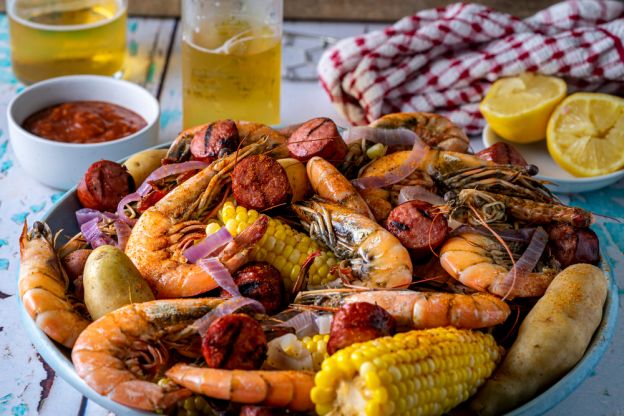A State-by-State Guide to the Most Iconic Foods in America

© P Kyriakos/Shutterstock
South Carolina: Lowcountry Boil
South Carolina’s Lowcountry, the coastal region around Charleston and the Sea Islands, is known for a rich culinary tradition – and nothing represents it better than a Lowcountry boil. Also called Frogmore Stew (named after a community on St. Helena Island), this one-pot feast is a communal meal that brings together the bounty of the coast. A Lowcountry boil typically includes fresh shrimp, smoky sausage (like kielbasa or andouille), chunks of corn on the cob, and small red potatoes, all boiled together in a large pot with a blend of spices (often a commercial crab boil seasoning). The cooking is straightforward: ingredients are layered in the pot based on how long they take to cook (potatoes first, shrimp last, etc.), so everything reaches perfect doneness at the same time. Once ready, tradition dictates that the boil is drained and dumped out onto a newspaper-covered table. Friends and family then gather around to peel, eat, and enjoy, with condiments like cocktail sauce or melted butter on hand. The beauty of a Lowcountry boil is in its simplicity and social aspect – it was historically a quick way to feed a crowd, popularized by National Guardsman Richard Gay in the 1960s when he prepared it for soldiers, and it stuck as a regional staple. South Carolina’s Gullah Geechee community (African American communities in the Lowcountry) also contributed techniques and flavors to the dish. With its mix of sweet local shrimp, hearty sausage, and seasoned veggies, a Lowcountry boil is summer on a table – best enjoyed outdoors with good company, making it an iconic taste of South Carolina’s coastal culture.
More steaming articles
 10 genius fruit hacks that will change...
10 genius fruit hacks that will change...
 Cheap & Easy Meals that Won't Break the...
Cheap & Easy Meals that Won't Break the...
 45 Quick & Easy Dinners to Make with...
45 Quick & Easy Dinners to Make with...




















































